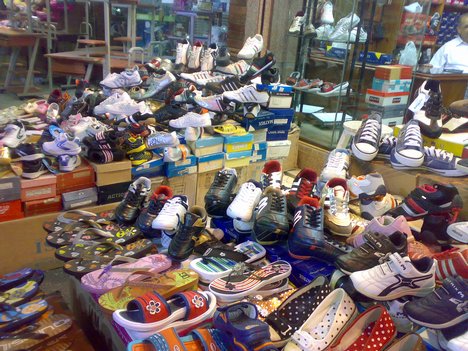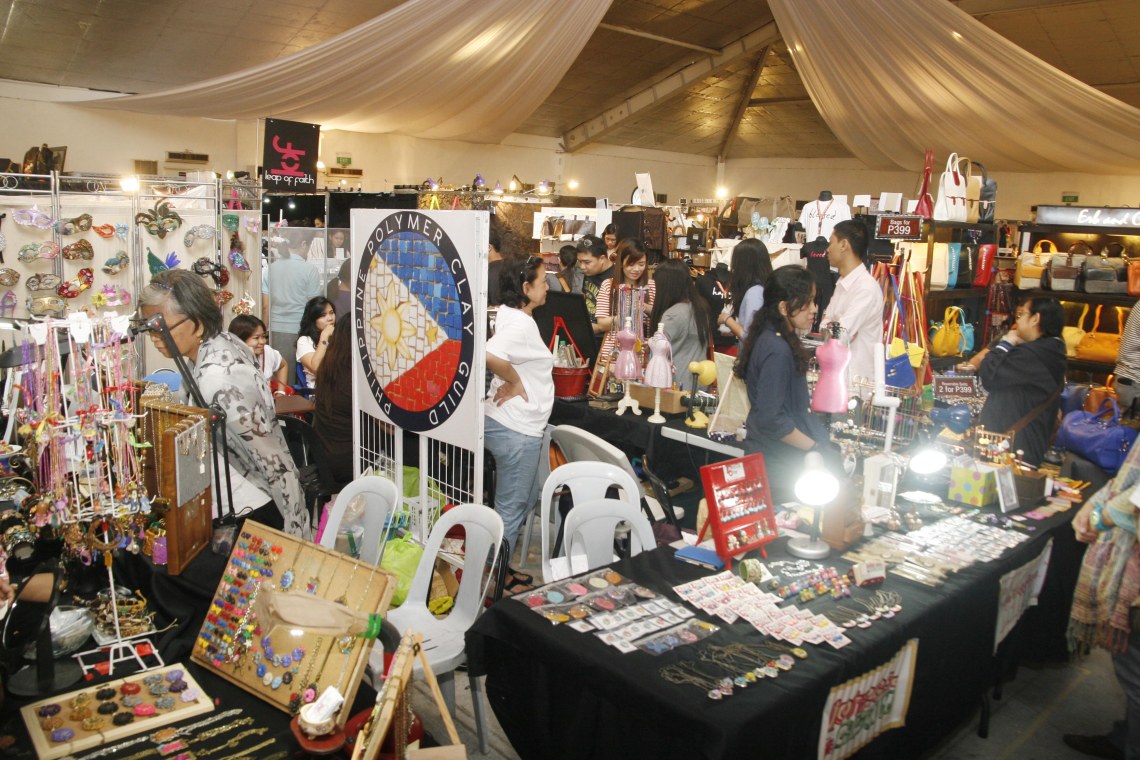Trends have always strongly influenced the way markets develop their products and services. It has guided manufacturing and retail behaviors depending on how it is going. A small shift in buyer behavior can heavily impact a business especially those with rigid structures and thus cannot easily adapt to changes. Brands and retailers also play a role in defining trends as they can easily change the playing field depending on how they source their products and what products to offer. With this, let us take a look at the various general trends which has shaped our retail landscape.
1990 – 2000: Imported Brand Invasion
During the 1990s, the main focus of marketers/sellers here in the Philippines was bringing in imported brands. This period has made famous brands like FUBU, Tommy Hilfiger, Lacoste, Polo Ralph Lauren, Giordano and Bossini . It was also the time when the 3rd level of Shoppesville flourished with PX goods since there were limited license holders to the famous brands here or they were too expensive at the time. Towards the end of the decade, knockoffs are becoming predominant in the market as more and more consumers are wanting to have branded goods but will not want to pay that high of a premium for these goods.
2000 – 2007: Bargain Hunters and Knock-Offs
During the early 2000s, the local market has been saturated with imported brands whether from exclusive licensees or gray market importers. By this time, the trends started to shift again and this time towards finding the best bargains. Knockoffs have become part of the marketplace, with even local manufacturers pirating the brand logos just to put on their products in order to help sell more. I remember back in 2002-2003 when the Diesel, Nike, FUBU and Reebok logos were being attached onto the straps of locally manufactured sandals because just by having the logo on the strap meant that the item would sell better than one without a logo. This trend also allowed cheap and unregulated goods from China to start flooding the local market. Importers and traders greatly benefited as the market was looking for cheap bargains which are basically poor copies of the licensed and original products. The supply kept on coming, mostly from smuggled/underdeclared goods sold by mainland Chinese “tourists” traders who have shops in Divisoria and Baclaran, because the class C and D markets wanted to have the feeling to own branded/luxury goods at cheap prices. Due to the cheap pricing, bazaar sellers often got cheap wholesale items from the mainland Chinese traders. Problem was these products were unregulated and quickly became more and more disposable as the years went by. Local brands have also taken queue and followed product and marketing trends set by imported brands with pricing roughly double of those which can be found at bargain bazaars. Even class A and B buyers found thrills in hunting for bargains which added more demand for cheap imported goods.

2005 – 2010: Bargain Values and Back-to-Local
Towards the latter half of the 2000 decade, the trend shifted again from finding cheap bargains to bargain value finds. People were growing tired of the poor quality of cheap bargain finds and began looking for lower than legitimate market priced goods which have some level of quality assurance to them. People started looking products with good price to value ratio. Sellers in bazaars started becoming micro brands with curated goods from various sources, not just from Divisoria anymore. Some sellers started importing from Thailand and South Korea, pretty much how 1990s gray market sellers did it but this time, with generic unbranded goods which have good build and material qualities. By this time as well, more and more malls are being put up and local brands started to gain a foothold as products are becoming more and more like the ones from imported brands due to importation. It was also during this time (2009-2010 I believe) when small local micro brands started tapping local manufacturers to develop products for them.

2010 – Present: Oversaturation and Niche Building
From 2010 onward, it was a very exciting time. A lot of local micro brands have emerged and have established their own niches. At this time, big business also started getting into the action by bringing in various brands from other parts of the world. This sought to break the idea of finding bargains only from bazaar and online sellers by introducing branded but similarly priced items. They actually go even lower when sale season arrives. The advent of brands like Forever 21, Uniqlo, and H&M (all brought in by SM) signaled the demise of some micro brands which cannot compete in terms of styling and product rotation. Big local brands also struggled against these brands while SM continued to develop it’s own in-store brands to compete against local and imported brands. Thus the early part of this decade ushered in a level of consumerism which we haven’t seen before with the conservative brand importers such as SSI and RRHI. Too many options and too many styles came out and are priced evenly if not even lower than tiangge prices. You can actually find some better products at cheaper prices now at department stores rather than in tiangges. This trend of having accessible imported brands has again started shifting how the market behaves and will pretty much determine how various industries would react.
Meanwhile, micro brands continued to develop their offerings by tapping both local and foreign suppliers. The micro brands continued pushing local small and micro scale manufacturers to produce better products for higher prices. Micro brands then started building their niche markets, surviving and thriving on what the general retailers cannot provide the public. It is also during this time when we start to see some micro brands slowly expanding operations as demand for brands which offer more than the trending styles become more and more in demand.
Local Brands and Marikina Manufacturers
So where were the Marikina shoemakers when everything was changing? During the 1990s, Marikina shoemakers remained largely the same, supplying to big local brands while these brands sold them at outlets and malls. When the higher demand came, Marikina shoemakers were not able to deliver in terms of style, quality and quantity. This failure to read the trends has caused the Marikina shoemakers to not be prepared for the shift in buyer culture and preference. Marikina shoemakers were limited by the input/raw materials and technical knowledge thus was not able to supply the needed styles which were in trend at the time.
Local brands were then forced to look at foreign sources or face losing business to other local brands or worse, to foreign brands brought in by brand importers and gray market imports.
When demand shifted to imitation and low priced fashion goods, Marikina shoemakers were able to provide for the basic styles but by then, the imports from mainland China started pouring in and began eating away at the share of the local manufacturers and brands. The damage to the industry was steadily increasing throughout the years, with more and more micro and small scale manufacturers closing down every year. Local brands too had a culling, some famous local brands started disappearing from malls due to sales issues and the inability to quickly adapt to the fast changes in market preferences. Small town shoe stores who have been reselling local wares were forced to close down as department stores were put up.
Thriving brands such as Gibi Shoes and Rusty Lopez were able to keep up with the trends and thus as able to thrive and become industry leaders in terms of reach and volume sold. But what is good for business is not always good for the industry. As sales and market share grew, so did importation. As much as they would have wanted to have locally sourced products, it just made better business sense to import majority their products. So Marikina shoemakers limped on, surviving through the efforts and projects of the local footwear association and LGU efforts. Local manufacturers who stayed true to their roots are Bristol and Gibson Shoes. They have partially mechanized operations (from what I read/watched from various news bits) which has allowed them to supply for their own brands for sale at malls and outlet stores. They are also some of the very few local brands who started coming out with classic and contemporary designs when the market showed interest in classic shoe styles.

Learning from the Trends
It is important to study the events which led to the current situation in order for the industry to discern which path to take in order to push forward. We have seen over and over again the inability of Marikina shoemakers to compete in the global mass production market in terms of quality and value for entry level goods. Should we stop trying to compete? Of course NOT! The industry should find ways to circumvent this hurdle and by watching the next wave of trends which is to deliver high value products, Marikina can surely answer that call. While the call to #supportlocal has been strong the past few years, only a handful of companies are left to fight the good fight. We have to rebuild the industry and set a new trend, one which will benefit the industry and not just the businesses.
The current trend of niche markets and local sourcing will continue as long as demand can be appeased by local manufacturers. In order to continue this, local shoemakers (with all craftsmen and manufacturers actually) should continue to innovate on their design and develop homegrown methods which will make the best of what we have to produce something similar to what is being offered in the market yet uniquely Filipino.
In the next and last entry of this series, I will share a vision for the industry. Because we can only move forward if we have a goal to achieve. Business is different from industry, we want to find the “more” which will drive us to become better, to show the world that our local shoe industry is not out of the game yet.


1 Comment